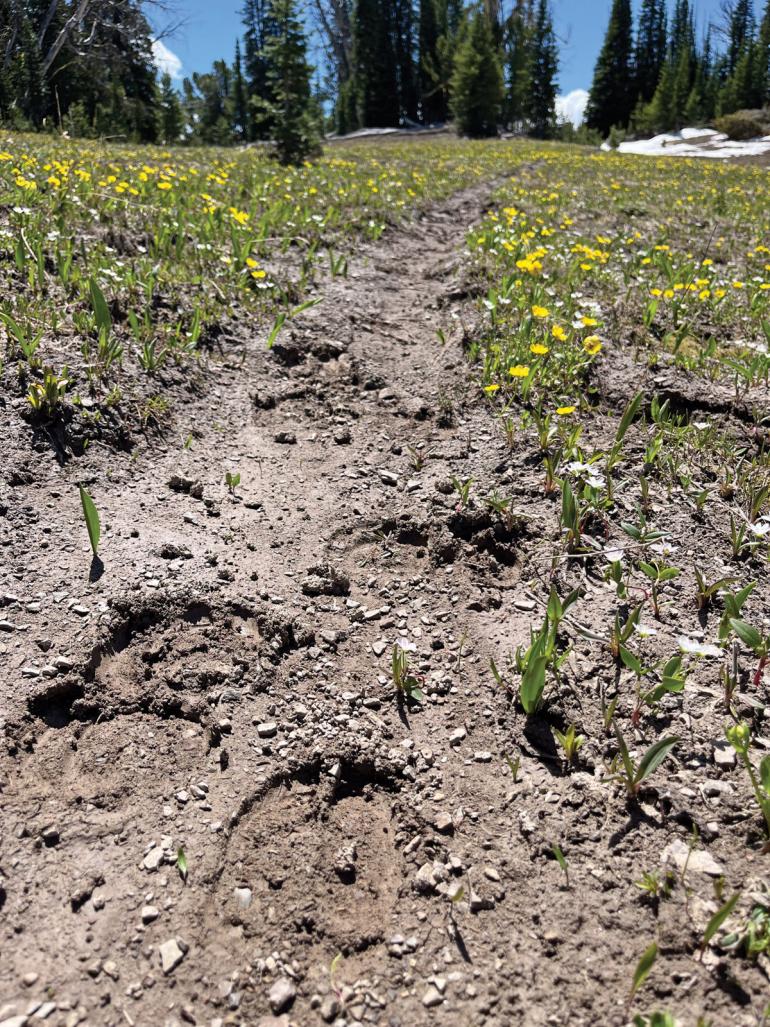Hoofin' It
Deciphering animal tracks.
One of the major fundamentals of hunting is executing the stalk—hence the name of this publication. But before you can sneak up on an animal, you need to know what its tracks look like. Here are a few essentials to keep in mind when sizing up a set of prints.
The Basics
First thing’s first: animals can only make tracks in surfaces that are malleable. So rather than spending time in a dry gravel bed, look for sign in areas with higher moisture content such as mud, sand, or snow. For determining freshness, check out the edge of the track. A sharply defined shape is more recent than one with soft, rounded edges. Then investigate the interior. If the center soil is darker than the outside, it’s likely that it was recently disturbed and therefore fresh. Keep tracking. If the track’s outline has been dried out by the sun, frozen overnight, or holds leaf litter, it’s probably over a day old. Move on.
Beyond shape and direction, pay attention to the distance between the prints and what other sign you see. Are the tracks closely dispersed with piles of scat every so often, or is the animal scattering traces of debris from bounding away?
Ungulates
Hooved tracks have a recognizable shape, akin to an upside-down heart. Identifying an ungulate track is easy; the hard part is differentiating between species, especially because so much of southwest Montana is good habitat for all sorts of animals. The easiest gauge is size. You’re not likely to confuse an antelope for a moose, but determining whether or not you’re looking at the trail of a calf elk or a mule deer buck is a bit tricker. In general, deer tracks have a narrower clove outline whereas elk have a wider, more rounded profile. Deer are more likely to leave dew-claw prints, as elk dew claws are higher up the legs. Antelope have straighter outer edges than deer, and moose have longer tracks than elk.
Bears
While you can use the process of elimination in some areas, most of southwest Montana is home to both black and grizzly bears. Both species have a big palm and five toe pads, similar to that of a human. The telltale way to differentiate bear tracks is to look at the arc of the toes and draw a horizontal line along the bottom. If the outside toe lands below your line, you can assume it’s a black bear. Grizzlies have all five toes in a straight line, in front of the foot pad.
Small Predators
One of the toughest distinctions to make is between dog and cat. Coyotes can be mistaken for wolves, mountain lions can be taken for bobcats, and common house cats and domestic dogs make things all the more tricky. Generally, dog prints are longer while cats are wider, but the first thing to look at with these predator tracks are the heel pads. Feline pads have three lobes whereas canines only have two. If you can make out claws, it’s a safe bet that you’re looking at a dog print. Cats have retractable claws that rarely show up in tracks.












